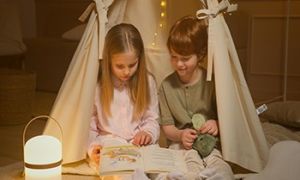The following article lists 30 art and craft descriptions and links to the EYLF. These can be used as a blurb, during observations, used for portfolios, or when displaying children's art and craft work.
Art and Craft Descriptions
- Sculptures:
Creating three-dimensional art using materials like clay, wire, paper, or recycled items. Children can explore textures, shapes, and structural designs. -
Mosaics:
Arranging small pieces of colored glass, stone, or other materials to create a pattern or picture. This activity helps with fine motor skills and pattern recognition. -
Finger Painting:
Using fingers to apply paint to paper, creating colorful and tactile artworks. Great for sensory exploration and creativity. -
Leaf Printing:
Coating leaves with paint and pressing them onto paper to create prints. This activity connects children with nature and explores different textures. -
Potato Printing:
Carving shapes into halved potatoes, dipping them in paint, and stamping them on paper. It's a fun way to learn about shapes and patterns. -
Straw Painting:
Blowing paint around a canvas using a straw. This creates interesting patterns and helps develop breath control. -
Drawing:
Using pencils, crayons, or markers to create images on paper. This fundamental activity enhances hand-eye coordination and imagination. -
Tie-Dye Art:
Folding, twisting, and dyeing fabric to create vibrant patterns. It's an excellent way to learn about color mixing and fabric arts. -
Bubble Painting:
Mixing bubbles with paint and blowing them onto paper to create unique bubble patterns. It’s a fantastic combination of art and science. -
Car Wheel Painting:
Rolling toy car wheels through paint and then on paper to create track patterns. This activity can be both creative and dynamic. -
Ball Painting:
Rolling balls dipped in paint across paper to create abstract patterns. Great for exploring motion and color. -
Baking Soda Painting:
Painting with a mixture of baking soda and water, then adding vinegar for a fizzy reaction. Combines art with a simple science experiment. -
Watercolour Painting:
Using watercolors to create fluid and vibrant artworks. This activity helps in understanding color blending and water control. -
Butterfly Prints:
Painting one side of a paper butterfly shape, folding it, and then pressing to create symmetrical prints. It’s an engaging way to explore symmetry. -
Marble Painting:
Rolling marbles dipped in paint around on paper inside a box to create swirling patterns. Enhances fine motor skills and creativity. -
Q Tip Painting:
Using Q-tips as paintbrushes to create dotted artwork. It's perfect for detailed and precise painting. -
Weaving:
Interlacing strips of paper, yarn, or fabric to create woven patterns. This activity develops fine motor skills and understanding of patterns. -
Scribble Art:
Encouraging free-form scribbling to create abstract art. It's great for self-expression and fine motor development. -
Salt Painting:
Applying glue to paper, sprinkling salt on it, and then adding watercolors for a textured and colorful effect. Combines art with a bit of chemistry. -
Balloon Stamping:
Dipping balloons in paint and then stamping them onto paper. Creates fun and unique circular prints. -
String Painting:
Dipping strings in paint and dragging them across paper to create interesting lines and patterns. Enhances coordination and creativity. -
Bubble Wrap Painting:
Using bubble wrap as a stamp to create textured prints. A fun way to explore different textures. -
Oil and Water Painting:
Mixing oil and water-based paints on paper to create unique effects due to their immiscibility. Teaches children about the properties of liquids. -
Fly Swatter Painting:
Dipping fly swatters in paint and then pressing or swinging them onto paper. It's a fun, high-energy activity. -
Lego Prints:
Using Lego bricks dipped in paint to create stamped patterns. A great way to merge playtime and art. -
Spray Bottle Painting:
Using spray bottles filled with paint to create misty and colorful artworks. Helps in developing fine motor skills. -
Ice Cube Art:
Freezing colored water in ice cube trays and then using the melting cubes to paint. Combines art with sensory play. -
Paper sculpture:
Creating three-dimensional art from paper by folding, cutting, and gluing. Enhances spatial awareness and creativity. -
Splatter Painting:
Flicking paint onto a canvas to create dynamic and energetic patterns. Inspired by the techniques of Jackson Pollock. -
Blow Painting:
Blowing through straws to move paint around on paper. It helps in developing breath control and creates unique patterns.
Links To The EYLF
-
Sculptures
-
Outcome 1: Express individuality through unique creations.
-
Outcome 3: Develop fine motor skills and coordination.
-
Outcome 4: Explore and manipulate different materials.
-
-
Mosaics
-
Outcome 2: Engage in collaborative projects.
-
Outcome 4: Develop problem-solving skills through pattern creation.
-
Outcome 5: Use art to communicate ideas and feelings.
-
-
Finger Painting
-
Outcome 3: Enjoy sensory experiences.
-
Outcome 4: Experiment with colors and textures.
-
Outcome 5: Express emotions and creativity through art.
-
-
Leaf Printing
-
Outcome 2: Connect with nature.
-
Outcome 4: Explore natural textures and patterns.
-
Outcome 5: Describe and discuss the process and results.
-
-
Potato Printing
-
Outcome 3: Enhance hand-eye coordination.
-
Outcome 4: Experiment with shapes and patterns.
-
Outcome 5: Share and explain creative choices.
-
-
Straw Painting
-
Outcome 3: Develop breath control and fine motor skills.
-
Outcome 4: Explore cause and effect through blowing paint.
-
Outcome 5: Communicate experiences and outcomes.
-
-
Drawing
-
Outcome 1: Express personal stories and ideas.
-
Outcome 3: Develop hand-eye coordination.
-
Outcome 5: Use drawing to communicate thoughts and emotions.
-
-
Tie-Dye Art
-
Outcome 2: Participate in a shared activity.
-
Outcome 4: Learn about color mixing and patterns.
-
Outcome 5: Discuss and describe the tie-dye process.
-
-
Bubble Painting
-
Outcome 3: Enjoy a fun sensory experience.
-
Outcome 4: Experiment with bubbles and paint.
-
Outcome 5: Communicate the steps and results of the activity.
-
-
Car Wheel Painting
-
Outcome 1: Express individuality through unique tracks and patterns.
-
Outcome 3: Improve coordination by moving cars.
-
Outcome 4: Explore movement and its effect on paint.
-
-
Ball Painting
-
Outcome 3: Develop fine motor skills.
-
Outcome 4: Investigate movement and patterns.
-
Outcome 5: Share and discuss creative processes.
-
-
Baking Soda Painting
-
Outcome 3: Combine art with sensory science.
-
Outcome 4: Experiment with chemical reactions.
-
Outcome 5: Explain the bubbling effect of vinegar and baking soda.
-
-
Watercolour Painting
-
Outcome 1: Express creativity through fluid art.
-
Outcome 3: Enhance fine motor skills.
-
Outcome 4: Learn about color blending and water control.
-
-
Butterfly Prints
-
Outcome 2: Create symmetrical art inspired by nature.
-
Outcome 4: Explore patterns and symmetry.
-
Outcome 5: Communicate the beauty of butterflies and symmetry.
-
-
Marble Painting
-
Outcome 3: Develop fine motor skills through movement.
-
Outcome 4: Investigate motion and color patterns.
-
Outcome 5: Describe the marble painting process.
-
-
Q Tip Painting
-
Outcome 3: Improve fine motor precision.
-
Outcome 4: Experiment with dot patterns and techniques.
-
Outcome 5: Share and discuss the artistic process.
-
-
Weaving
-
Outcome 1: Express individuality through woven art.
-
Outcome 4: Develop coordination and pattern recognition.
-
Outcome 5: Describe weaving techniques and results.
-
-
Scribble Art
-
Outcome 1: Express emotions through free-form art.
-
Outcome 3: Develop hand-eye coordination.
-
Outcome 5: Communicate thoughts and feelings through scribbles.
-
-
Salt Painting
-
Outcome 3: Combine sensory play with art.
-
Outcome 4: Experiment with texture and color mixing.
-
Outcome 5: Explain the process and results of salt painting.
-
-
Balloon Stamping
-
Outcome 3: Enhance motor skills through stamping.
-
Outcome 4: Explore patterns created by balloon shapes.
-
Outcome 5: Communicate the fun and results of balloon stamping.
-
-
String Painting
-
Outcome 3: Develop coordination through string manipulation.
-
Outcome 4: Investigate different patterns and techniques.
-
Outcome 5: Share the creative journey and outcomes.
-
-
Bubble Wrap Painting
-
Outcome 3: Enjoy sensory play with bubble wrap.
-
Outcome 4: Experiment with textured patterns.
-
Outcome 5: Communicate the process and fun of bubble wrap painting.
-
-
Oil and Water Painting
-
Outcome 3: Combine sensory play with art and science.
-
Outcome 4: Explore the interaction of oil and water.
-
Outcome 5: Describe and discuss the unique patterns created.
-
-
Fly Swatter Painting
-
Outcome 1: Express creativity through dynamic art.
-
Outcome 3: Improve motor skills with fly swatters.
-
Outcome 4: Investigate movement and paint splatter.
-
-
Lego Prints
-
Outcome 2: Engage in a shared activity.
-
Outcome 4: Explore patterns and textures with Lego bricks.
-
Outcome 5: Share and describe creative choices.
-
-
Spray Bottle Painting
-
Outcome 3: Develop fine motor skills through spraying.
-
Outcome 4: Experiment with misty patterns and effects.
-
Outcome 5: Communicate the fun and results of spray painting.
-
-
Ice Cube Art
-
Outcome 3: Enjoy sensory play with cold and color.
-
Outcome 4: Investigate the melting process and colors.
-
Outcome 5: Describe the process and outcomes.
-
-
Paper Sculpture
-
Outcome 1: Express creativity through three-dimensional art.
-
Outcome 3: Develop fine motor skills with paper manipulation.
-
Outcome 4: Explore spatial awareness and construction.
-
-
Splatter Painting
-
Outcome 1: Express emotions through energetic art.
-
Outcome 3: Enhance coordination with splatter techniques.
-
Outcome 4: Investigate dynamic patterns and effects.
-
-
Blow Painting
-
Outcome 3: Develop breath control and fine motor skills.
-
Outcome 4: Explore patterns created by blowing paint.
-
Outcome 5: Share and discuss the creative process.
-
Further Reading
Benefits Of Art and Craft
Linking Art To The EYLF
Art and Craft Activities


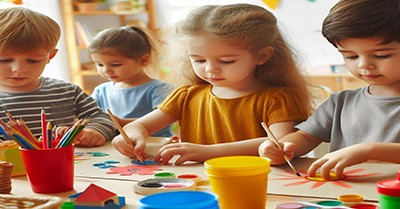
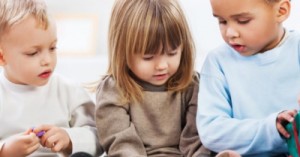
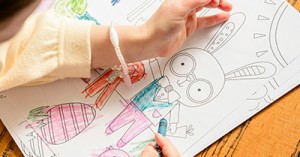
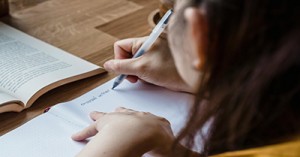
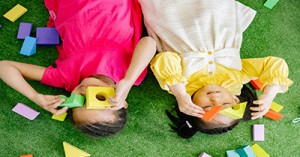
 As an Educator in Australia, your pay rate falls under the Children’s Services Award 2010. This award states the minimum amount that an employer can
As an Educator in Australia, your pay rate falls under the Children’s Services Award 2010. This award states the minimum amount that an employer can When working as a qualified Early Childhood Teacher (with a university degree) within a service, your rate of pay will come from the Educational Services
When working as a qualified Early Childhood Teacher (with a university degree) within a service, your rate of pay will come from the Educational Services When working as a Diploma Qualified Educator your pay rate is from the Children's Services Award 2010. This Award states your minimum rate of pay
When working as a Diploma Qualified Educator your pay rate is from the Children's Services Award 2010. This Award states your minimum rate of pay When working as a Cert 3 Qualified Educator, your pay rate is from the Children's Services Award 2010. This Award states your minimum rate of
When working as a Cert 3 Qualified Educator, your pay rate is from the Children's Services Award 2010. This Award states your minimum rate of Educational Leaders play a crucial role in their early childhood service by ensuring that the educational program aligns with best practices and supports the holistic
Educational Leaders play a crucial role in their early childhood service by ensuring that the educational program aligns with best practices and supports the holistic In early childhood education and care, ratios are more than a technicality—they are a frontline safeguard. Every child deserves responsive supervision, emotional connection, and developmental
In early childhood education and care, ratios are more than a technicality—they are a frontline safeguard. Every child deserves responsive supervision, emotional connection, and developmental With the new national child safety reforms kicking in on 1 September 2025, early childhood services like yours have a real opportunity to lead the
With the new national child safety reforms kicking in on 1 September 2025, early childhood services like yours have a real opportunity to lead the Here’s a comprehensive Mobile Phone and Smart Watch Policy tailored for early childhood education and care (ECEC) services in Australia, aligned with the latest 2025
Here’s a comprehensive Mobile Phone and Smart Watch Policy tailored for early childhood education and care (ECEC) services in Australia, aligned with the latest 2025 The Sea of Fish Challenge is a national initiative that invites children, educators, families, and communities to create and display fish artworks as a symbol
The Sea of Fish Challenge is a national initiative that invites children, educators, families, and communities to create and display fish artworks as a symbol Across the early childhood education and care sector, educators are sounding the alarm: current staffing ratios are insufficient to deliver safe, meaningful, and developmentally appropriate
Across the early childhood education and care sector, educators are sounding the alarm: current staffing ratios are insufficient to deliver safe, meaningful, and developmentally appropriate

